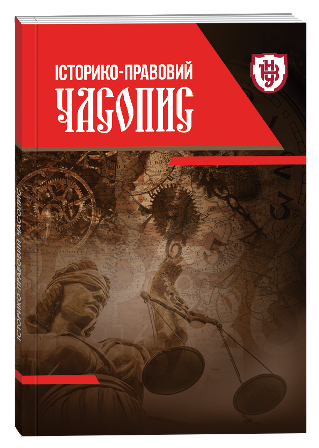Освітні міграційні процеси з точки зору історії, права та соціології
Ключові слова:
право на освіту, освітня міграція, європейські освітні програми, іноземний студент, мобільний студентАнотація
Довгий час міграційні процеси були і надалі залишаються цікавим явищем для дослідження серед науковців. Досить багато досліджень присвячується тематиці міграційних рухів економічних та нелегальних мігрантів, тим не менш, не багато з них звертають увагу на міграційні процеси, пов’язані із навчанням та здобуванням освіти. Стаття являє собою огляд міграційних освітніх процесів з точки зору історії, права та соціології. Метою статті є ознайомлення читача з правовим регулюванням, загальними поняттями, пов'язаними із міграційними потоками студентів у світі та у Польщі. Автор вказує і намагається розмежувати поняття «іноземний студент» і «мобільний студент», що, власне, має ключове значення для даного дослідження. Щоб певною мірою структурувати статтю, автор презентує всі дані відповідно до трьох основних критеріїв дослідження: основні «пункти призначення» іноземних студентів, визначення основних країн-донорів мобільних студентів та причини вибору конкретної країни для навчання. Автор також звертає увагу на міграційні процеси студентів у Польщі, намагаючись проаналізувати еволюцію цих процесів в історичному розвитку.
Посилання
For instance the Education at a Glance, prepared by the Organization for Economic Co-operation and Development (OECD), presents one of the best statistic researches in education field, yet still the researchers concentrate mainly on the issue of educational migration within the OECD countries. Despite the fact, that the OECD countries are hosting more than 85-90 per cent of the global educational migration, the rest 10-15 per cent should not be forgotten.
According to OECD and UNESCO Institute for Statistics, the number of foreign students in 1995 was estimated at around 1,7 million people.
Education at a Glance 2011: OECD Indicators. – OECD, 2011.
The further statistics are based on the latest data published by the Organization for Economic Co-operation and Development (OECD) in Education at a Glance 2013: OECD Indicators. Despite the fact, that the publication was released in 2013 (2012/2013 academic year), all data relate to the year 2011 (meaning 2011/2012 academic year).
United States, United Kingdom, Germany, France, Australia, Canada, Russia Federation, Japan, Spain, South Africa, China, Italy, New Zealand, Austria, Korea, Switzerland, the Netherlands, Belgium.
See table at: http://dx.doi.org/10.1787/888932850775.
See tables at: http://dx.doi.org/10.1787/888932850851 and http://dx.doi.org/10.1787/888932850813.
Lingua franca – the language, systematically used to make communication possible between persons, who do not share a common mother tongue.
We can talk only about post-World War II period, as in the interwar period the number of foreign students in Poland was negligible.
See generally C. Żołędowski. Studenci zagraniczni w Polsce. – Warszawa, 2010.
Previously – Socrates-Erasmus. Since 2014 the new Erasmus+ program was launched. The new program combines all the EU's current schemes for education, training, youth and sport, including the Lifelong Learning Program (Erasmus, Leonardo da Vinci, Comenius, Grundtvig), Youth in Action and five international cooperation programs (Erasmus Mundus, Tempus, Alfa, Edulink and the program for cooperation with industrialized countries).
Data from the Main Statistical Office (GUS) from the year 2013/2014.
So called «internationalization index». The most commonly used indicator of the internationalization of higher education. It is the share of foreign students in the total number of students in the country. In the leading countries in this respect foreign students represent 10-15% of the total number of students (in Australia even 21.5%). The OECD average is around 8%, the EU average is 7%. In the academic year 2012/13 Poland had 29172 foreign students – a proportion of the total number of students (1 675 815 people) gives an index of internationalization of 1.74%.
Data refers to the year 2008. Source: C. Żołędowski (ed.), Studenci zagraniczni w Polsce. – Warszawa, 2010.
Report «Studenci zagraniczni w Polsce 2013» [Electronic resource]. – Mode of access: http://www.studyinpoland.pl.
##submission.downloads##
Опубліковано
Як цитувати
Номер
Розділ
Ліцензія

Ця робота ліцензується відповідно до Creative Commons Attribution-NonCommercial 4.0 International License.







